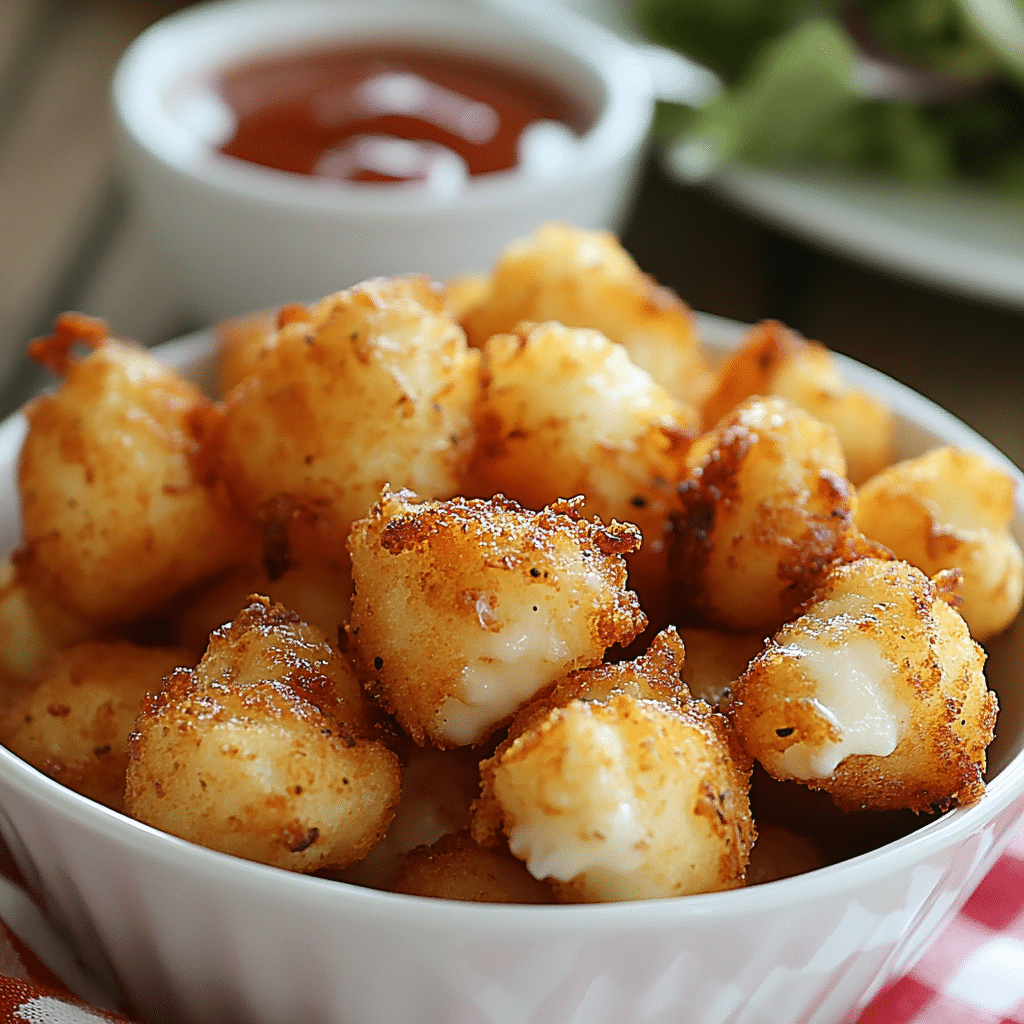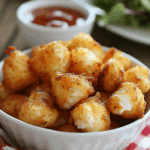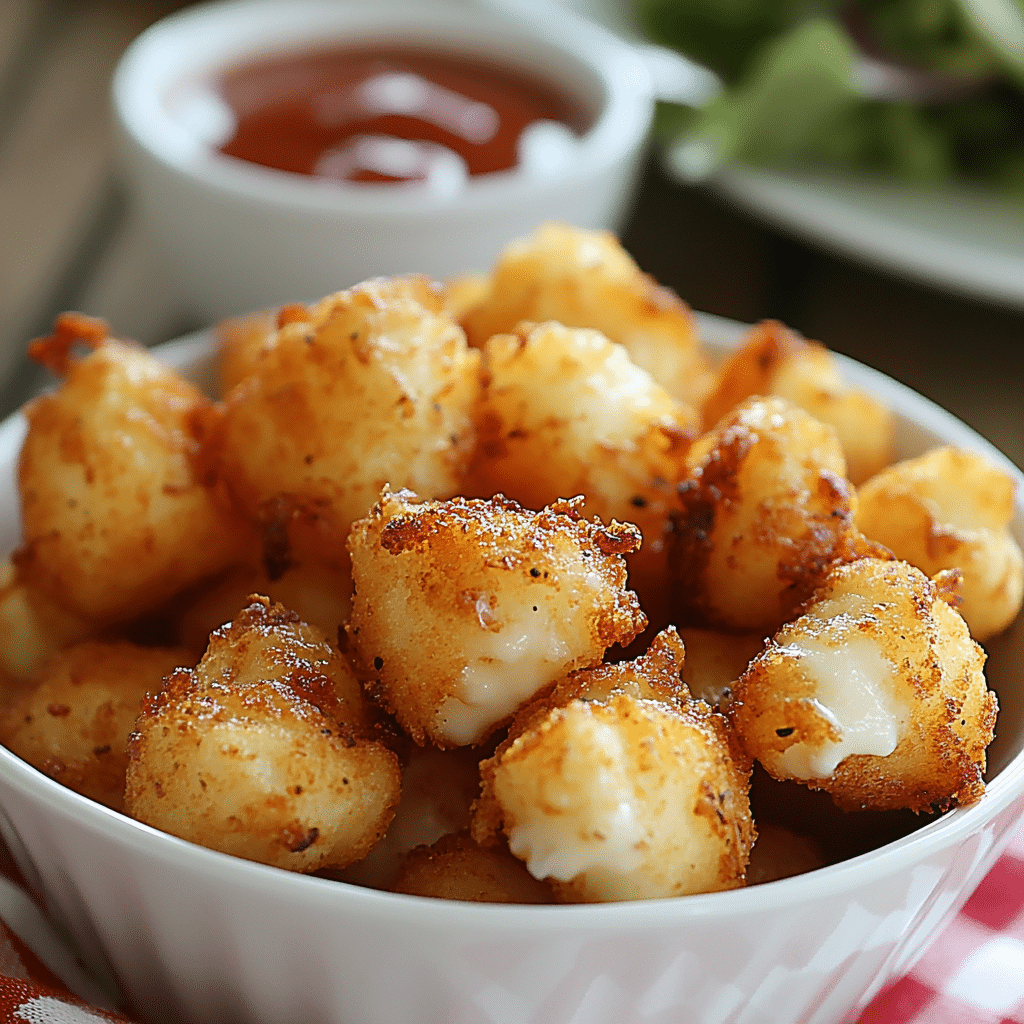Why You’ll Love This Recipe
Cheese curds are fresh, bite-sized chunks of curdled milk that offer a squeaky, chewy texture and mild, creamy flavor. Popular in the Midwest and Canada, they’re perfect as a snack on their own, tossed into salads, or deep-fried for a crunchy treat. Homemade cheese curds are surprisingly simple to make and bring the freshness and quality of the dairy right to your kitchen.
ingredients
(Tip: You’ll find the full list of ingredients and measurements in the recipe card below.)
whole milkliquid rennetcalcium chloride (if using pasteurized milk)cheese culture (mesophilic)non-iodized salt
directions
Pour the milk into a large pot and slowly heat it to 90°F (32°C), stirring gently.
Add calcium chloride (if needed) and stir well.
Sprinkle the cheese culture over the milk and let it rehydrate for 1-2 minutes, then stir in.
Add liquid rennet and stir gently for 30 seconds. Let the milk sit undisturbed for 30-45 minutes until a firm curd has formed.
Cut the curds into 1/2-inch cubes with a long knife, then let them rest for 5 minutes.
Slowly heat the curds to 105°F (40°C), gently stirring to prevent them from matting.
Maintain this temperature for 30 minutes, stirring occasionally to release whey.
Drain the whey using a colander lined with cheesecloth and let the curds sit for about 5 minutes.
Add salt to the curds and gently toss to evenly coat.
Let the curds rest for 10-15 minutes to fully absorb the salt and firm up slightly.
Enjoy fresh or store as desired.
Servings and timing
This recipe yields approximately 1 pound of cheese curds.Preparation time: 15 minutesSetting time: 45 minutesCooking time: 30 minutesDraining and salting: 20 minutesTotal time: 1 hour 50 minutes
Variations
Deep-fry the curds in a light batter for a crispy appetizer.
Add herbs like chives or dill for a flavored curd.
Use goat’s milk or sheep’s milk for a unique twist.
Sprinkle with chili flakes for a spicy kick.
storage/reheating
Store fresh cheese curds in an airtight container in the fridge for up to 1 week.They are best enjoyed within a few days for optimal squeakiness.To refresh the squeak, microwave for 5-10 seconds just before serving.Do not freeze fresh curds, as they lose texture when thawed.

FAQs
What makes cheese curds “squeaky”?
The squeaky texture comes from the protein structure when the curds are very fresh and moist.
Can I make cheese curds without rennet?
Rennet is essential for proper curd formation; vegetarian rennet is available.
Do cheese curds melt like regular cheese?
Yes, they melt well and are often used in poutine or melted into other dishes.
Is it safe to eat them without aging?
Yes, cheese curds are meant to be eaten fresh and do not require aging.
Can I use ultra-pasteurized milk?
No, ultra-pasteurized milk will not form curds properly.
Why do cheese curds lose their squeak?
Over time, moisture and protein structure change, which reduces the squeak. Heating briefly can restore it.
How do I know if the curds are ready?
They should be firm, slightly springy, and have released a good amount of whey.
Can I flavor the curds?
Yes, herbs, spices, or even garlic powder can be added during the salting stage.
Are cheese curds vegetarian?
They can be if you use microbial or vegetable rennet instead of animal-derived rennet.
What do cheese curds taste like?
Mild, fresh, and milky with a slight tang.
Conclusion
Cheese curds are a delicious and fun way to explore home cheesemaking. With their signature squeak and fresh taste, they’re a snack that’s both satisfying and versatile. Once you try making them yourself, you’ll appreciate their simplicity and charm even more.
Print
Cheese Curds
- Prep Time: 15 minutes
- Cook Time: 1 hour
- Total Time: 1 hour 15 minutes
- Yield: About 1 pound of cheese curds
- Category: Snack
- Method: Stovetop
- Cuisine: American
- Diet: Vegetarian
Description
Cheese curds are small, fresh, and springy pieces of curdled milk, often enjoyed as a snack or deep-fried appetizer.
Ingredients
- 1 gallon whole milk
- 1/4 tsp mesophilic starter culture
- 1/2 tsp liquid rennet diluted in 1/4 cup cool, non-chlorinated water
- 1/4 tsp calcium chloride (if using pasteurized milk)
- 1/2 tsp cheese salt (non-iodized)
- Oil for frying (optional, for fried cheese curds)
- 1 cup all-purpose flour (optional, for fried cheese curds)
- 1 egg (optional, for fried cheese curds)
- 1/2 cup milk (optional, for fried cheese curds)
- 1 cup breadcrumbs or panko (optional, for fried cheese curds)
Instructions
- Heat the milk to 90°F (32°C) in a large pot.
- Sprinkle the mesophilic starter culture over the milk and let it rehydrate for 1 minute. Stir gently to incorporate.
- Add calcium chloride if using, then stir in diluted rennet.
- Cover and let sit undisturbed for 45 minutes, or until a firm curd forms and breaks cleanly.
- Cut the curd into 1/2-inch cubes and let them rest for 5 minutes.
- Slowly heat the curds to 102°F (39°C), stirring gently to prevent matting.
- Maintain this temperature and stir for another 30 minutes until curds shrink and firm up.
- Drain the whey and let curds mat together under light pressure for 15-30 minutes.
- Cut matted curds and salt them with cheese salt.
- Enjoy fresh or proceed to bread and fry them for a crispy snack.
- (Optional) For fried curds: dredge curds in flour, dip in beaten egg and milk, coat with breadcrumbs, then deep fry at 375°F until golden brown.
Notes
- Fresh cheese curds are best eaten the same day they’re made.
- Use a thermometer for precise temperature control.
- Frying is optional but makes a delicious appetizer.
- Curds should squeak when fresh and properly made.

